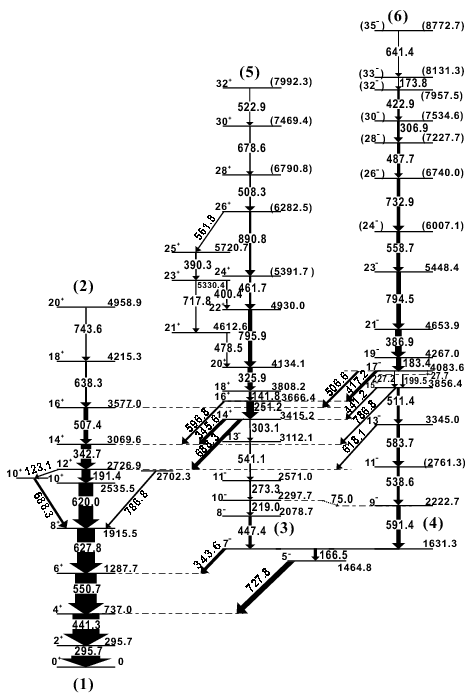The researchers at the Institute of Modern Physics, Chinese Academy of Sciences (IMP) have investigated high-spin states in 190Pt which extends the systematical information on multiquasiparticle states of the Pt isotopes.
Studies have shown that the Os-Pt-Hg nuclei in the mass 190 region have many interesting phenomena, such as γ-soft deformation, shape coexistence, and existence of multiquasiparticle states. In the Pt isotopes, multiquasiparticle states have been identified in the 191Pt at relatively low excitation energy, and evidence was presented for the existence of triaxial shape, whereas for 190Pt few properties of the multiquasiparticle states could be obtained previously.
This research on 190Pt was preformed via the 176Yb(18O, 4n) reaction using the tandem accelerator and the GEMINI detector array at the Japan Atomic Energy Agency (JAEA). Based on the analysis of γ–γ coincidence relationships, γ–ray energy sums, relative intensities and ADO ratios, the previous known level scheme of 190Pt has been extended significantly and shown in Fig. 1. The characteristic of the Eγ over spin curves for bands 1 and 2 reveals that this nucleus may undergo evolution from predominantly vibrational structure to rotational sequence with increasing the angular momentum. Band 5 has been confirmed to be associated with the νi13/2-2νh9/2-1νj-1(νj being νp3/2 or νf5/2) configuration, and total Routhian surfaces calculations predicted large triaxial deformations of these states. The νi13/2-3νj-1 configuration was suggested for the band 6 based on the comparison with the neighboring nuclei.
The relevant results have been published in Phys. Rev. C 89 (2014) 054303.

Fig.1 Level scheme of 190Pt as established in the present work. (Image by IMP)

